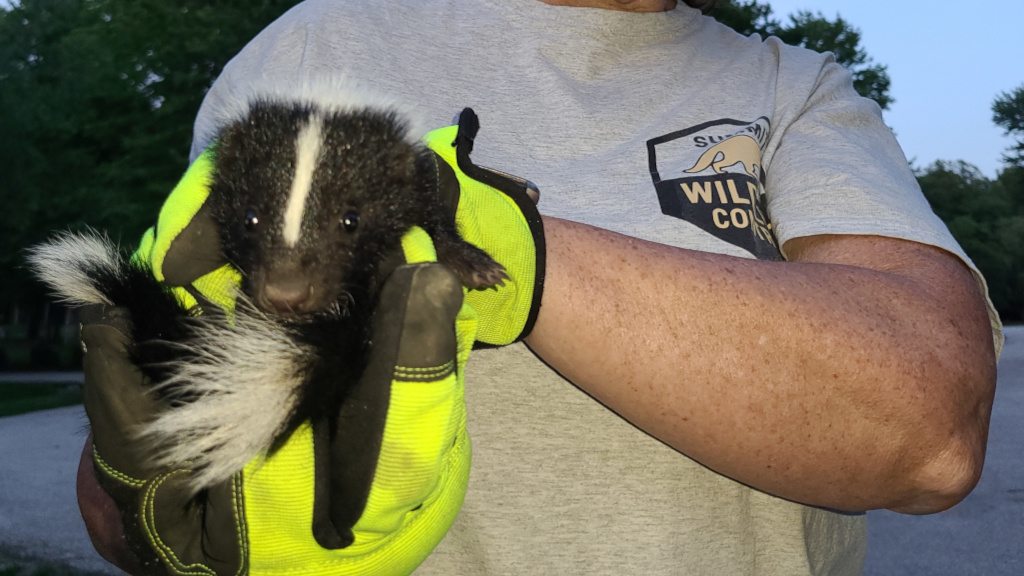Both rabies and distemper are present in Ohio wildlife. These diseases pose a risk that can threaten the lives of both your family and pets. When encountering sick or odd-behaving wildlife on your property, understanding the basic symptoms of distemper vs rabies can help you to properly handle the situation.
Canine Distemper
Canine distemper is a contagious and serious disease caused by a virus that attacks the respiratory, gastrointestinal and nervous systems of dogs. The virus is found in commonly encountered Ohio nuisance wildlife such as foxes, coyotes, raccoons, and skunks.

Canine distemper is highly contagious and easily spread to your family dog. The disease is generally passed through droplets in the air exhaled by animals infected with the disease. However, The virus can be transmitted through direct contact with urine, saliva, or feces of an infected animal. For unvaccinated dogs that spend time outdoors, coming into contact with urban raccoons and skunks can lead to disastrous consequences for your pet.
Canine distemper does not cause illness in people. However, the symptoms of distemper in wildlife can be similar to those of rabies. Rabies is a fatal viral infection usually transmitted to people via the bite of an infected animal.
Rabies
When comparing distemper vs rabies, only rabies poses a risk to you and your family. However, rabies in humans is rare. Ohio’s last human rabies case was in 1970. But the risk of contracting the disease from Ohio wildlife is real and you should understand the disease and signs of an infected animal.
Rabies is most often transmitted through the bite of a rabid animal. In addition, the disease can be spread when the saliva of an infected animal gets into an open wound or onto a mucous membrane. Rabies is almost always fatal once clinical symptoms appear. This is why prompt medical care is required if you believe you have made contact with a potentially rabid animal.
Distemper vs Rabies: Basic Symptoms
Distemper Symptoms in Wildlife
The Canine Distemper virus attacks the gastrointestinal and respiratory systems of the infected animal. A few days after infection, canine distemper will generally cause a fever. From there, symptoms progress to lethargy, runny nose, loss of appetite and eye discharge. As the infection continues, the animal may exhibit muscle twitching, head tilting, partial paralysis, convulsions or compulsive movements like chewing or pacing. An infected animal that is typically nocturnal may be seen wandering aimlessly during the day.
Rabies Symptoms in Wildlife
The Rabies virus attacks the brain and nervous system of the infected animal. Once infected, symptoms may take a long time to appear, but typically show after 21 days. Changes in behavior such as irritability, aggression, nervousness and over-excitement may be signs of a rabies infection. Wildlife may become overly friendly or appear at unusual times of day. Neurological symptoms such as partial or progressive paralysis, drooling, lack of muscle coordination and a drooping lower jaw may indicate rabies.
Treatment and Outlook
Unfortunately, wildlife infected by rabies and distemper have little chance for survival. Once rabies symptoms are present—in both animals and humans—there is no treatment. However, it is still important to identify the source of infection so it isn’t spread to other animals or humans.
If you observe a sick, dying, or odd-behaving raccoon, skunk, or other wildlife, contact your county wildlife officer through the Ohio Department of Natural Resources (ODNR). If you feel there is an immediate risk to the safety of your family, contact your local police or sheriff’s department. Never attempt to handle or remove the animal yourself.
As state-licensed Nuisance Wildlife Control Operators, Summit Wildlife Control technicians are trained and experienced in the safe handling and removal of nuisance wildlife. This includes those that may be exhibiting signs of illness. In many cases, your county wildlife officer or local law enforcement will refer you to us. Although we charge for our services, we’re often the only means to remove a sick animal from private property. If you have questions, or have a sick animal on your property, contact us at (330) 333-6545.





